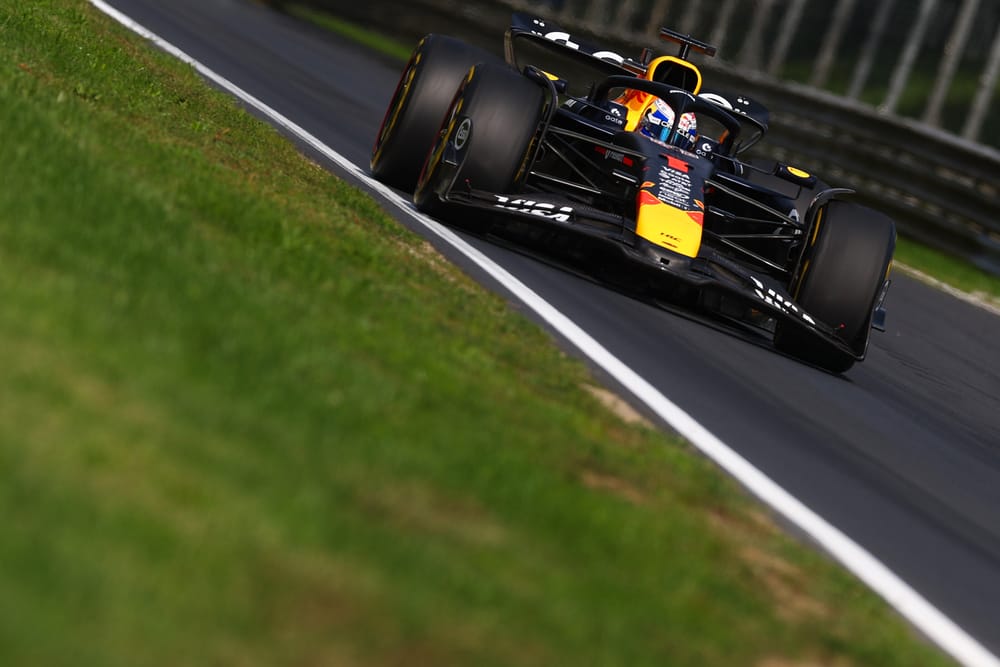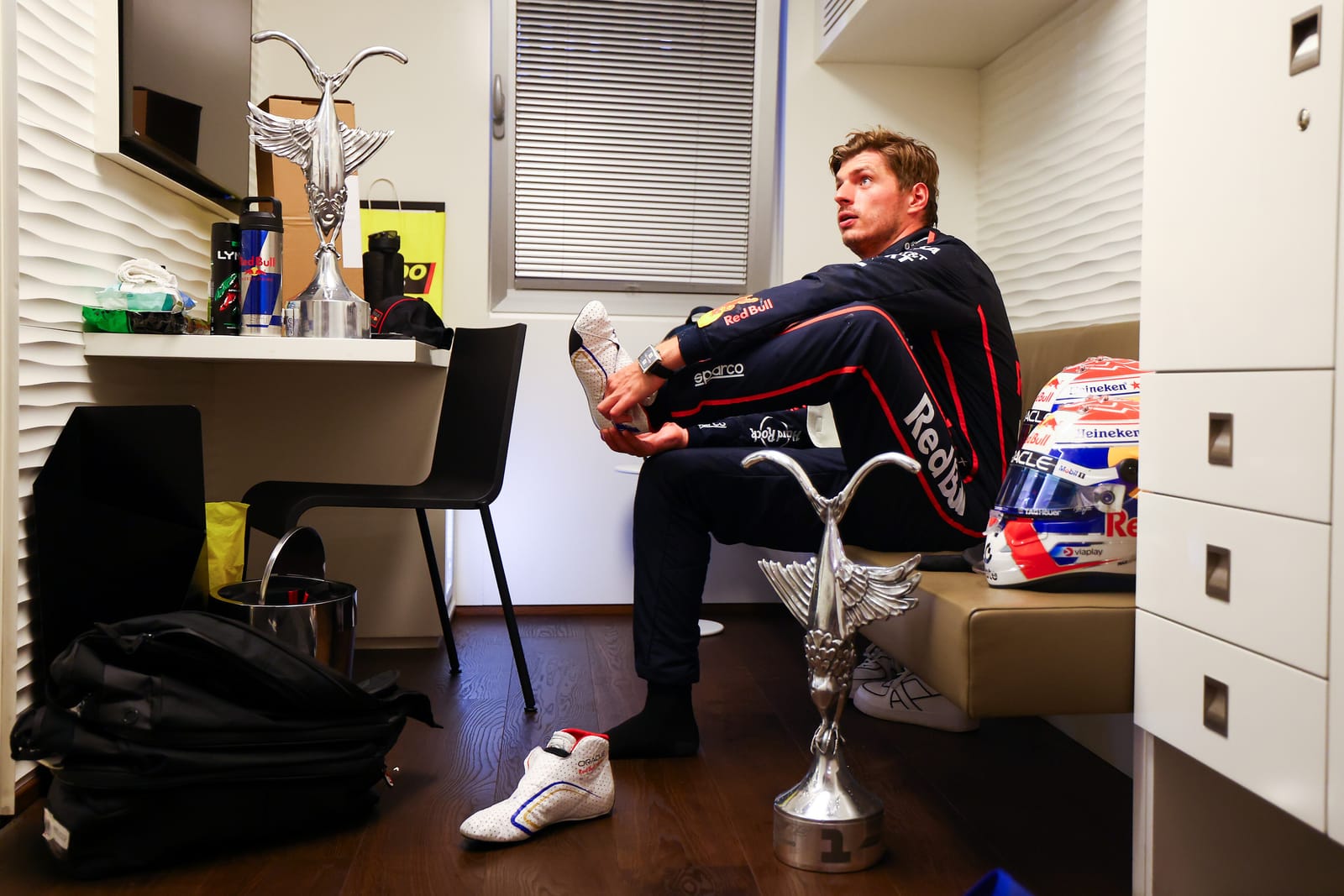In a Formula 1 season of McLaren dominance, it is interesting to look deeply at why another team should pop up at an individual event and lead the way.
There is always a reason as, although you can put it down to luck or circumstances, the reality is that no team has the absolute, all-round performance under these regulations to be fastest every single weekend.
Red Bull has endured a difficult season of external and internal turmoil and second drivers who haven’t stepped up to the plate, but we have seen several times that if you can give Max Verstappen a car that’s well-balanced, he will deliver victories. That’s what he did at Monza - and what Red Bull changed to make that possible looks like it can be applied in Baku this weekend too.
Verstappen has won three races this season. Suzuka, where he was also on pole; and then at Imola, after passing Oscar Piastri on the first lap; but his pole position and win at Monza was probably his most impressive. Let’s take a closer look at why that happened and what it tells us about the Red Bull car.
We often hear drivers complaining about their cars in turbulent and windy conditions. In reality, the airflow coming off your own front wing is what the rest of the car has to deal with, so for any team those airflow characteristics are critical to its car’s overall performance.
In general, the car will have been conceived and developed in the windtunnel and CFD around a ‘Mr Average’ circuit downforce requirement. From there, to achieve a higher level of downforce and, in turn, the balance required it is down to fitting a more aggressive rear wing and then balancing that out with more front wing angle or fitting a trailing edge Gurney flap. For lower-downforce circuits, the opposite would be true.
At Monza in 2024, where he qualified seventh and finished sixth, Verstappen didn’t have a car that was anywhere near the balance he needed. He was less than complimentary about the car.
For that race last year, Red Bull still had the front wing forward-most element mounted to the nose (red ellipse), which means no slot gap. To try to achieve the required balance, the team created a very strange front wing rear element (green line) trim line.
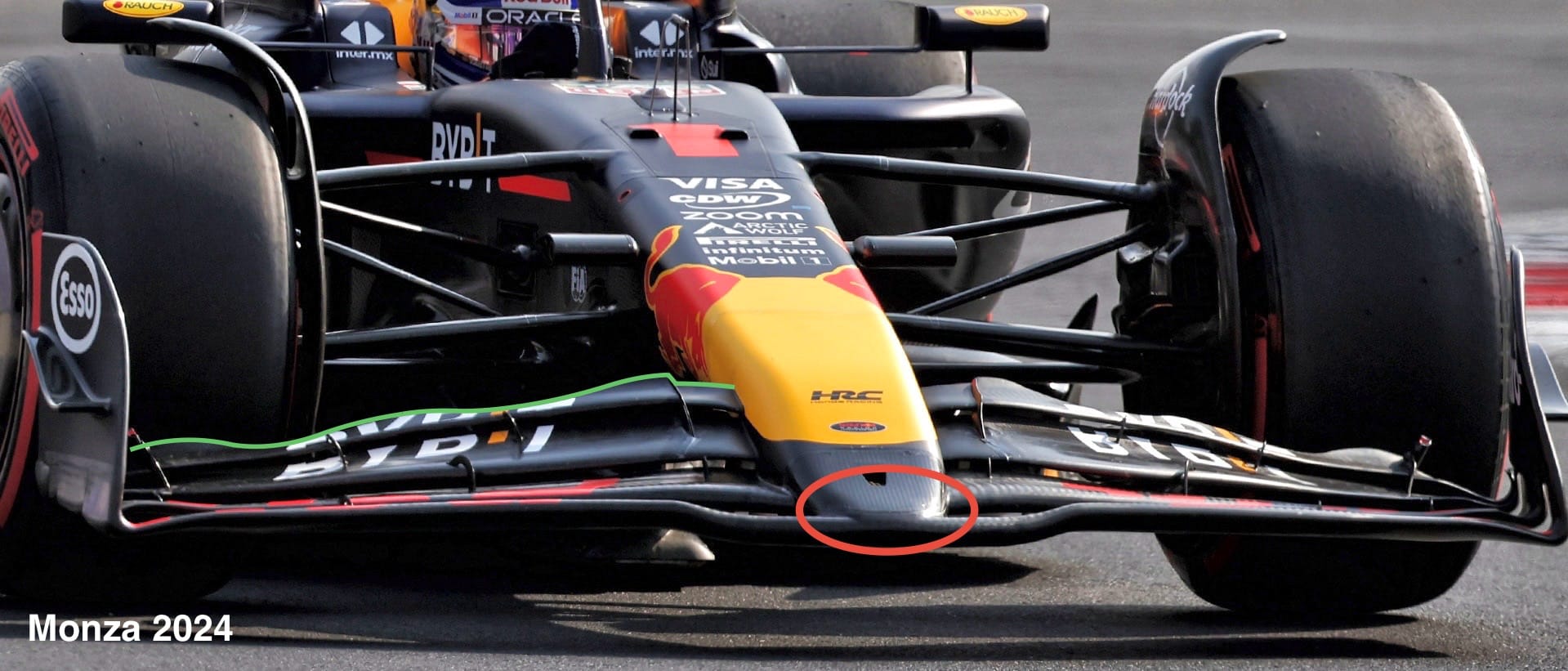
This change in the flap trim line for this one-off event will have a dramatic effect on the airflow downstream. The rest of the car will have been optimised around a more conventional flap trim line, which would not have been so ‘fussy’. In my opinion, it’s no surprise that Red Bull didn’t have the performance that Verstappen expected.
For 2025, Red Bull took a different direction. As we can see, it now has the slot gap (red ellipse) between the nose and the most forward element. But more importantly, between Zandvoort where Verstappen was fairly happy with the car qualifying third and finishing second and Monza, Red Bull had more or less the same front wing rear element (green line) trim line.
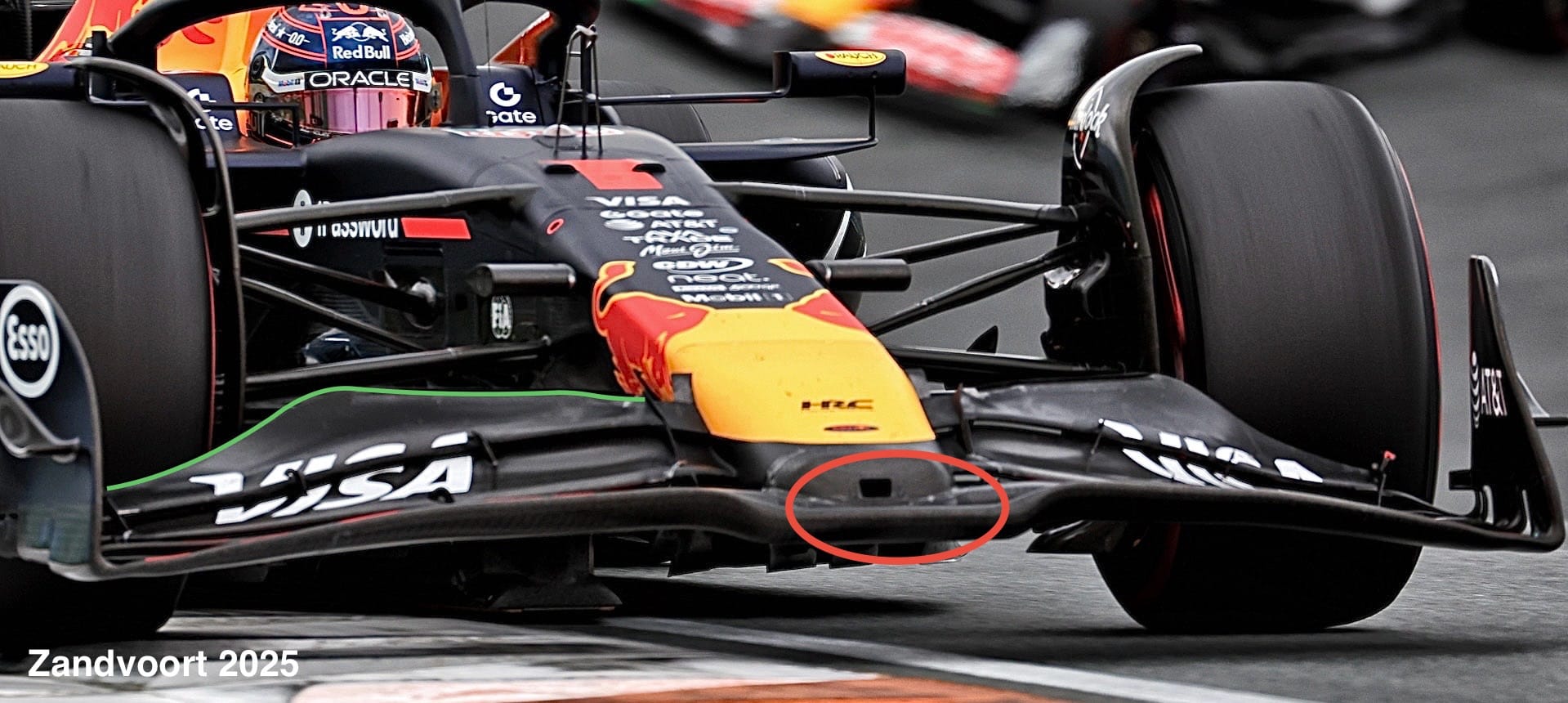
Yes, it is slightly reduced as far as the chord length is concerned, but it is still from the same ‘family’ so the airflow to the rest of the car will have more or less the same characteristics. This means less disruption to the performance of the underfloor.
Basically, Red Bull put the front wing into the car’s happy place and then concentrated on achieving the required balance around its skinnier-than-most rear wing using the the other variables available in the set-up, such as front and rear ride heights. These can have a major effect on the balance, as can the vertical stiffness of the car and how the ride heights change with speed meant they achieved a reasonable balance for Verstappen at least, who hates understeer.
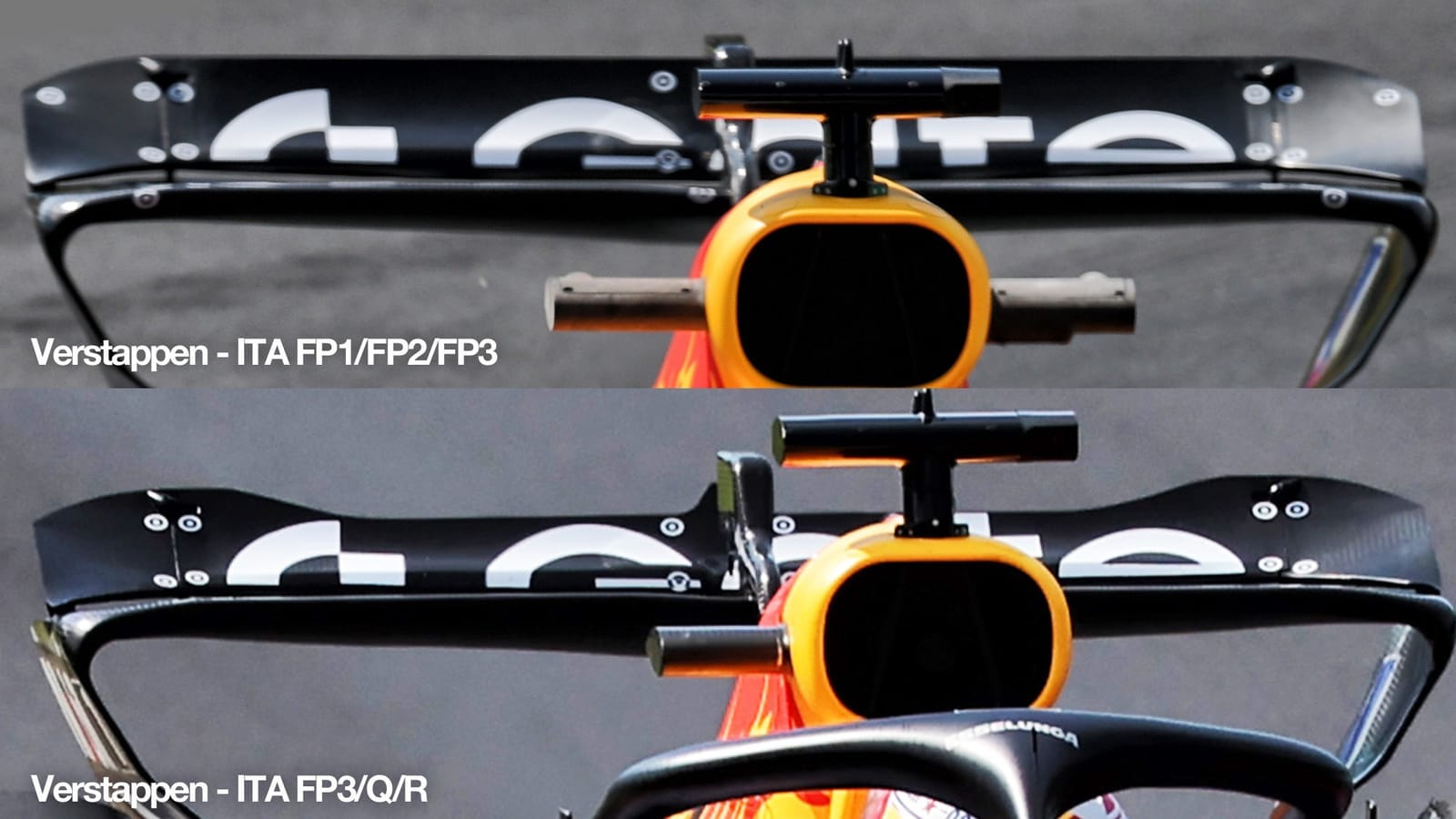
I’m sure there were other developments in the underfloor that might mean that the aerodynamic centre of pressure from the actual underfloor moved more rearwards with speed. If that happens, it will give you more front grip in the lower- and medium-speed corners and more rear grip in the fast corners. This allows you to run a less draggy rear wing, meaning you also get the benefit of increased straightline speed.
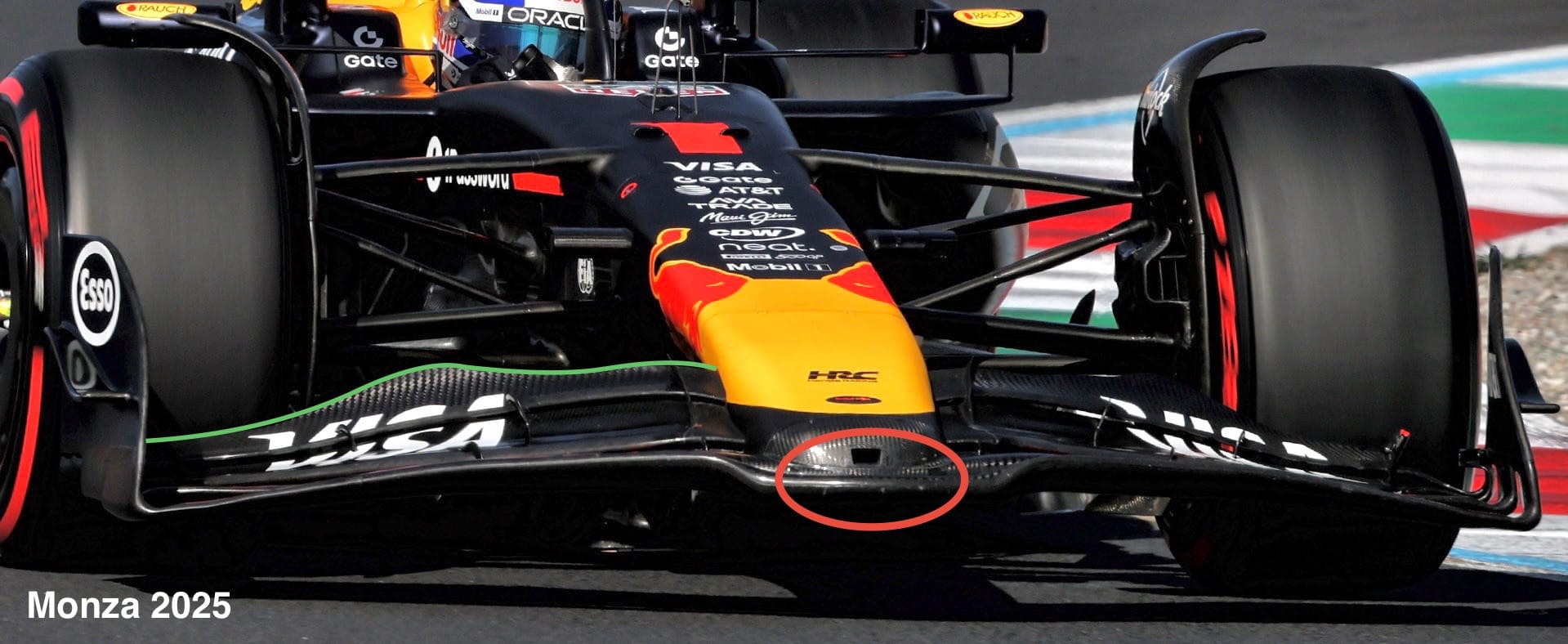
The big question is will this improvement in performance continue? Well, it didn’t happen for Mercedes after it won in Montreal but I’m sure Red Bull will have looked very closely at why it was so dominant at Monza. As Baku is also fairly low downforce, I can see Red Bull trying to carry through the same philosophy on the set-up for this weekend.
Then again, as I said above, performance is all relative. Perhaps McLaren, which finished second and third at Monza, just had a bad weekend and we will be back to what has been the norm for 2025 with the two papaya cars filling out the front row of the grid and steaming off to another 1-2 in the race.
The big question is if that does happen, what will the order - or perhaps ‘orders’ is a better word - be? And could Verstappen and Red Bull be a problem by getting amongst the McLarens and making any stage managing of fairness impossible?


